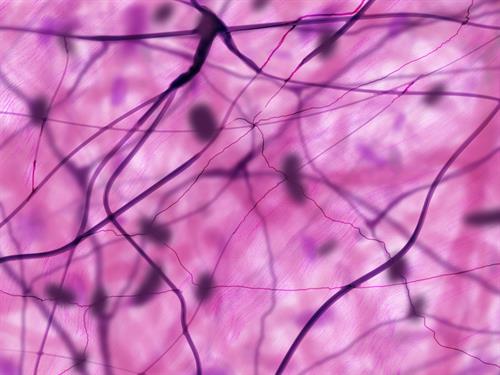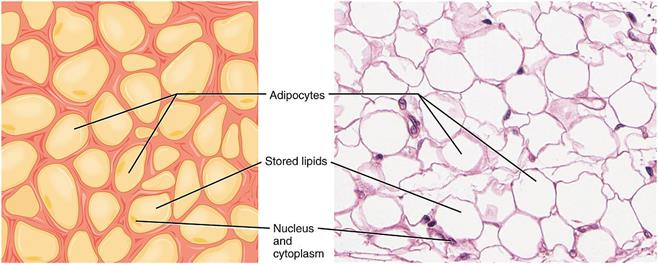PDF chapter test TRY NOW
In our human body, all our organs and body parts are functioning as individual systems. But they are all linked by a special type of tissue called connective tissue. These tissues connects all the body parts and helps the entire human body function as a single entity.
For example,
- Bones are attached by a connective tissues called ligaments.
- Muscles are connected to bones using tendons.
- Bone itself is a connective tissue.
- Nutrients are transported to all parts of the body through the connective tissue blood.
Connective tissue:
Origin: Connective tissue arises from the mesoderm of the embryo.
Location: It is the most abundant and widely distributed tissue. These tissues are specialized to connect various body organs. It provides the structural framework and support different tissue to form organs. There are three main components of the connective tissue, namely,
- Matrix
- Connective tissue
- Fibres
Structure: The cells of connective tissues are loosely packed, living and embedded in an intercellular matrix. The matrix can bejelly-likefluid, dense or rigid.
The nature of the matrix determines the properties of the connective tissue.
Fibres of the matrix: Connective tissues have three types of fibres: Collagen, elastin and reticular.
- White fibres are the most widespread and made up of collagen, which gives flexibility and strength.
- Yellow fibres formed a network and made up of elastin, which is more elastic than collagen but not as strong as it.
- Reticulate fibres are thin, made up of highly branched collagenous fibres that provide support.
Functions of connective tissues:
- The connective tissue's major function is binding, supporting and packing together different organs of the body.
- It helps to prevent the organ from getting displaced by body movements.
Types of connective tissues:
Connective tissues are further classified into the following categories.
- Loose connective tissue (Areolar and Adipose tissue)
- Fluid connective tissue (Blood and Lymph)
- Supportive connective tissue (Bone and Cartilage)
- Dense Connective tissue (Ligaments and Tendons)
1. Loose connective tissue:
a. Areolar tissue:
It is a supporting and packing tissue found between the organs lying in the body cavity.
Location: It can be seen in the skin and muscles, around the blood vessels and nerves.

Areolar tissue
It contains the cells and fibres that are loosely arranged in asemi-fluidground substance matrix. Areolae are small spaces that are formed due to the fine threads crossing each other in every direction. These fine threads are the forms of the matrix. Collagen fibres, Elastin fibres and fibroblast cells are the major components present inside the matrix.
Function:
- It is a loose and cellular tissue, and it fills the space inside the organs, supports internal organs.
- It helps in the repair of tissue after an injury.
- This tissue matrix plays an essential role in the diffusion of oxygen and nutrients from small blood vessels.
b. Adipose tissue:
Shape: Spherical or oval adipose cells contains large droplets of fat.

Adipose tissue
Arrangement: They are arranged into lobules that are separated by the collagen and elastin fibres.
Location: It is situated below the skin of subcutaneous tissue between the internal organs such as the kidney and heart.
Function:
- The excess nutrients in the body are converted into fats and are stored in this tissue. Hence it is called a fat reservoir.
- It works as an insulator (A material or device used to prevent heat) due to fats' storage.
- They keep the visceral organs in position and act as shock absorbers around the eyeballs and kidneys.
Important!
Do you know!
- The number of fat cells are entirely depends on the individual.
- In obese adults, it is about \(60-100\) billion, while in the case of non-obese adults is \(30-50\) billion.
- Adipose tissue is a specialized connective tissue composed of lipid-rich cells called adipocytes.
Reference:
https://commons.wikimedia.org/wiki/File:409_Adipose_Tissue.jpg
